Monclova, Coahuila 作者: 来源: 发布时间:2021-11-10
1. Population and Area
Pop: 381,432 (metro)
Area: 1,251.32 km2 (munip.)
Elev: 620 masl
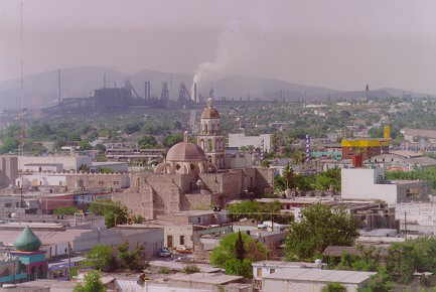
Monclova location in Mexico within the state of Coahuila
https://goo.gl/maps/8zMRTq3vFXobbhZF6
2. Natural geography
Nature and weather
Orography
Monclova is located approximately over 600 meters above sea level (meters above sea level), which makes its climate, largely combined with pollution from industries in the city, somewhat warm.
The main elevation of the municipality is the Sierra La Gloria. (2,180 masl) sierra blue birds (1,200 masl)
Soil type
Two types of soil can be distinguished in the municipality:
Xerosol.- Soil of light color and poor in organic matter and the subsoil is rich in clay or carbonates, with low susceptibility to erosion.
Regosol.- It does not present different layers, it is clear and it looks like the rock that gave rise to it. Its susceptibility to erosion is highly variable and depends on the terrain on which it is found.
Regarding land use, most of the municipal territory is used for livestock development, the area dedicated to agricultural production and the urban area being less. Monclova has the largest paved streets.
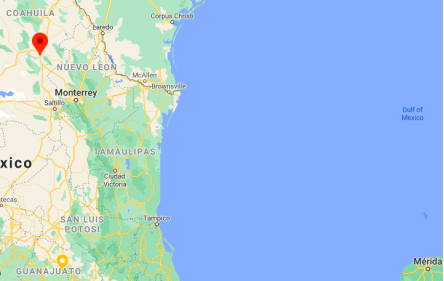
Hydrography
It has several wells to eliminate water supply, distributed throughout the south and southwest of the city. There are springs to the south of the municipality and on the slopes of Cerro de la Gloria, which feed the Monclova River, this being the one that crosses the urban area in its middle eastern part. To the southeast is the Candela River.
The drinking water system is supplied mainly from underground streams, concentrated in the "Pozuelos" ejido, in the neighboring municipality of Frontera.
Monclova River
The Monclova River was originally born in the town of Ojo del Saucillo, in the northeast of the municipality of Castaños, in the Sierra de La Gloria, however, it feeds its flow from various springs that spring up in the rainy season already within the municipality of Monclova which crosses from southeast to northeast, later entering the municipality of Abasolo.
As a historical fact, the waters of the Monclova River have been used by AHMSA for the pig iron and steel smelting process, significantly reducing its flow, but not depleting it.
Before the arrival of AHMSA, the flow of the river was large and there were places like "El Rabbit", which was a recreational space where people used to go to bathe and have fun. It was also used by people to wash cars and clothes. In the basin there were large walnut trees and certain areas where people could even fish.
Although its reduced flow has turned it into a small stream, the Monclova River has occasionally overflowed, thanks to natural phenomena such as hurricanes Beulah, Gilberto, and Alex, which have managed to fill the river's flow, exceeding most of the bridges that cross it.
Köppen Classification: Mid-Latitude Steppe and Desert Climate
This climate type is characterized by extremely variable temperature conditions, with annual means decreasing and annual ranges increasing poleward, and relatively little precipitation. This climate is typically located deep within the interiors of continents and is contiguous with the tropical desert climates of North and South America and of central Asia. This region type owes its origins to locations deep within continental interiors, far from the windward coasts and sources of moist, maritime air. Remoteness from sources of water vapor is enhanced in some regions by mountain barriers upwind.
The Köppen Climate Classification subtype for this climate is "Bsh". (Mid-Latitude Steppe and Desert Climate).
The average temperature for the year in Monclova is 71.6°F (22°C). The warmest month, on average, is June with an average temperature of 84.4°F (29.1°C). The coolest month on average is January, with an average temperature of 54.7°F (12.6°C).
The highest recorded temperature in Monclova is 113.9°F (45.5°C), which was recorded in September. The lowest recorded temperature in Monclova is 14.9°F (-9.5°C), which was recorded in January.
The average amount of precipitation for the year in Monclova is 15.1" (383.5 mm). The month with the most precipitation on average is September with 4.3" (109.2 mm) of precipitation. The month with the least precipitation on average is March with an average of 0.3" (7.6 mm). In terms of liquid precipitation, there are an average of 46.5 days of rain, with the most rain occurring in September with 6.3 days of rain, and the least rain occurring in March with 1.7 days of rain.
https://www.weatherbase.com/weather/weather-summary.php3?s=24367&cityname=Monclova%2C+Coahuila%2C+Mexico&units=
Getting there and around
Get there
By plane
Venustiano Carranza Monclova International Airport (LOV IATA) (located about 6.5 km (4.0 mi) from the city center on the road towards Cuatro Cienegas). No major Mexican airline flies to Monclova. Venustiano Carranza International Airport (Q1932904) on Wikidata Monclova International Airport on Wikipedia.
The usual way to get to Monclova is taking a plane to Monterrey, and then either a car or bus to Monclova. Buses are cheap (about US$10) and may take 3 to 4 hours to get to Monclova. It is also possible to hire a car and driver to pick you up. This is the most time efficient way to get to Monclova (about 2 hours and no waiting on a bus schedule), and the fare is usually about US$150.
By car
Monclova is about 3 hours south of the border crossing at Eagle Pass, Texas.
By bus
Buses go to Monclova from most northern Mexico cities. The main bus station is downtown.
At the Tex-Mex border, buses to Monclova leave the Piedras Negras bus station hourly throughout the day. A first class bus ticket from the border costs M$192 (pesos) (as of April 2008). Grupo Senda's Coahuilenses line serves all significant towns in the region.
Car Rental – To explore Mexico’s provincial towns and cities—including its beach locations and the scenery and attractions near them— consider renting a car for your visit. Having your own car will give you more flexibility than using public transport options and, in some cases, offer you access to places which are otherwise difficult to visit without the use of a car.
There are several car rental agencies. Rent something modest and unassuming.
COVID19 - International entry into Mexico from United States
Allowed for: All visitors arriving by air. Mexico land borders are closed to non-essential travel
Restricted for: There are no current restrictions.
Get around
Local Buses – Local buses and mini-buses (combis or micros) are available locally for a fraction of the cost of a taxi around town. You need to speak Spanish to be able to ask for directions or ask the driver to tell you where to get off.
Taxis – Taxis in most of Mexico’s towns and cities are not metered, so agree your price before you get in. Taxi travel is very affordable in Mexico, in comparison to the USA, Canada and Europe, and so provides a viable means of public transportation in Mexico. Your hotel can arrange taxis for you; some post their rates on a board in the lobby; taxi hotel rates are usually higher than cabs you hail off the street. If you speak Spanish, you will have a distinct advantage and be able to negotiate a price with the driver.
Uber is expanding rapidly across Mexico and now offers services in cities across the country, including: Mexico City, Toluca, Cuernavaca, Puebla, Querétaro, León, Aguascalientes, San Luis Potosí, Guadalajara, Monterrey, Hermosillo, Tijuana, Mexicali, and Mérida. Uber has been adding Mexican cities to its network every year, check for availability when you arrive at your destination in Mexico.
Cabify and Didi are also developing and currently operate in cities including Mexico City, Toluca, Monterrey, Puebla, Querétaro and Tijuana. Check for availability in the city you are visiting.
These services offer people with smartphones a way to book a cab through a mobile app for a pre-agreed price. Fares are comparable with Sitio type cabs, and sometimes trade at a premium to this when local demand increases.
https://www.mexperience.com/transport/taxi-travel-in-mexico/#51
3. ECONOMY
GDP: 62,480 M MXN
https://es.wikipedia.org/wiki/Reynosa
4. Industry characteristics
The city accounts for the highest production of steel of Mexico and Latin America, hence its nickname "The Steel Capital". In 1942 the steel factory Altos Hornos de Mexico was founded, accelerating the industrial development of Monclova.
Today Monclova has one of the highest commercial, industrial and financial developments, and it is currently one of the cities with the lowest poverty rates in Mexico. Its metropolitan area is among the 10 most competitive urban areas in the country, and it also has the highest labor productivity.
In 2010, it became the third municipality with the least social backwardness in the country, after San Pedro Garza García, N.L., and the Benito Juárez, D.F. Currently, according to the last census carried out in 2016, it is in position number 11 in this classification.
Agriculture
In the Municipality, agriculture is only practiced in the surroundings, such as the Ejido Ocho de Enero, La Cruz, which are municipalities of Frontera and in the Ejido el Oro, which is the municipality of Monclova. Of the crops, the production of wheat, corn, cereal, forage, etc. stands out. In the last decade, agriculture has developed better since the government implemented certain support programs to improve the production and distribution of rural people and based on these programs it has improved the quality of products and improved relations between farmers. and government.
Cattle raising
Cattle, Goats and Pigs are raised. This in Ranchos and Ejidos in the region.
Logging
In the municipality, pastures are mainly exploited, Monclova is not an area very dedicated to this work, however it has many well-kept green areas, among others Xochipilli Park I and Xochipilli Park II, the latter being the park with the most hectares in the entire state from Coahuila.
Mining
The main non-metallic mineral resource currently exploited is lime. In Monclova, coal, iron, copper, silver and gold deposits have been exploited. On the other hand, Monclova has the company with the largest steel production in all of Mexico and Latin America, in addition to having the largest blast furnace in all of Latin America, it is the largest and with the greatest resources. This has Mines in the Carboniferous Region of Coahuila and the Product of this is transferred to use.
Industry
The most important steel foundry in the country, Altos Hornos de México, SA, is located in the Municipality, which, together with other industrial units, provides a considerable part of the needs of the national industry in the electrical, automotive, construction, food, oil, capital goods, as well as the agricultural and transportation sectors. Altos Hornos de México, S.A. prevails as an industry in iron and coal minerals for steel throughout the world.
Services
It has a developed hotel and restaurant sector supported by franchises with an international presence. It also has regional food restaurants throughout its Golden Zone, as well as fast food establishments and several entertainment venues; cinemas, shopping malls and centers, among others.
Key project: no relevant information.
5. Attractions
Coahuila-Texas Museum
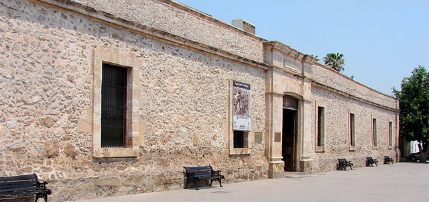
The Coahuila y Texas Museum is a cultural center dedicated to temporary exhibitions and cultural events of various kinds.
A room next to the main entrance of the building permanently exhibits the history of Coahuila from the first settlers to the Revolution. The exhibition combines informational cards, images and different types of archaeological and historical pieces.
The building is a fundamental historical site for the state. It was built between 1794 and 1804 as a military hospital and with the War of Independence it became a barracks. The building served as a prison for numerous insurgents captured in Acatita de Baján. As it was abandoned, this brick, quarry and beam roof construction was rescued and adapted as a museum in the last decade of the 20th century.
Its name alludes to the name that this entity of which Monclova was the capital had, at the beginning of the independent life of Mexico.
In March the Art Fair takes place that brings dance, plastic arts, handicrafts, gastronomic presentations and symphonic music concerts to Monclova.
https://www.turimexico.com/museo-coahuila-texas
Museum of Weapons and Historical Aspects “El Polvorín”
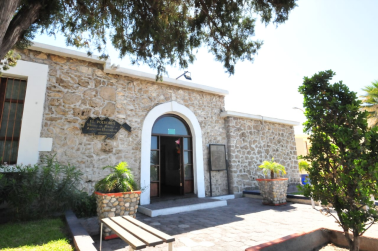
In Monclova, a gunpowder deposit was built in 1778 for the troops that protected the entire region from Chichimeca attacks.
This enclosure houses in its five rooms a heterogeneous collection of antique pieces. The archeology room displays human skulls, basketry fragments, lithic artifacts, and other remains from the ancient hunter-gatherer peoples of the area. These pieces alternate in the cabinets with Mesoamerican sculpture and pottery, creating an interesting cultural contrast.
Another room is directed to the last centuries of local history since the founding of Santiago de la Monclova in 1698. The trunk of the walnut tree to which Miguel Hidalgo was tied here stands out after his capture in March 1811. Dozens of revolvers and rifles justify the title of this museum.
In a neighboring room, photos and belongings of various personalities linked to the Monclova region are displayed, such as the revolutionary generals Bruno Neira, Lucio Blanco and Pablo González, the businessman Harold Pape and the musician Jesús “El Chapul” Martínez Larrañaga.
It has two more rooms dedicated to temporary exhibitions.
https://www.turimexico.com/museo-armas-aspectos-historicos-polvorin-coahuila
Reynosa Cathedral
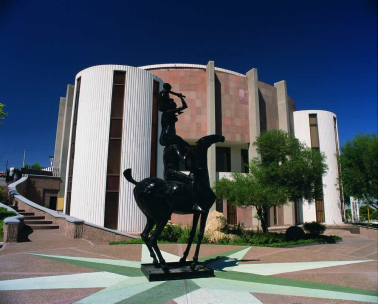
Harold R. Pape was a successful American steel engineer who in 1942, associated with the Mexican government, founded the company Altos Hornos de México in Monclova.
In 1934 he married Suzanne "Lou" Robert, a French artist. Among many other donations that the Pape made to Monclova is this museum, inaugurated in 1977, whose purpose has been to offer, in the center of Coahuila, an approach to art, education and culture.
The Pape Museum has various spaces and rooms. On the first level of the main building is the permanent room Two lives, a story, dedicated to the Pape marriage. Given the activity carried out by Harold in the life of Monclova and in the economic development of Mexico in the 20th century, this room could well be considered one of the most relevant historical museums in Coahuila.
Another part of the permanent exhibition is located on the second level and consists of Mexican numismatics, delicate Chinese pieces of ivory, jade and porcelain and reproductions of Mesoamerican pre-Hispanic works of art and more.
On the second level, an average of four exhibitions are presented per year, which have made the museum more famous for being very attractive. On the third level there is an auditorium for 260 people where concerts, plays, book presentations and other artistic and cultural events are usually offered.
The 3,500 square meters of the enclosure's facilities also include a beautiful sculpture garden, an audiovisual room and the Mini Pape Children's Cultural Center, an additional building where courses and workshops are held for children under 12 years of age.
https://www.turimexico.com/museo-pape-coahuila
6. History
The name of Monclova (lat. Mons: mount, region; and Clovius: Clovio) arose during the period of expansion of the Roman Empire, when the region that today is called Fuentes de Andalucía in the province of Seville was designated in that way. Spain, in honor of the Roman General Clovio (s. II, BC), 13 who fought against the Lusitanian troops of Viriato. In the 14th century, the Monclova castle was built in that region. In this way it is concluded that Monclova means "Region (or Mount) of Clovio".
On September 20, 1617, King Felipe III issued a decree by which he declared the creation in the Iberian peninsula of the county of Monclova, together with the issuance of the respective noble title, which was granted to Antonio Portocarrero de la Vega and Enríquez (first count of Monclova). The third count of Monclova was Melchor Portocarrero Lasso de la Vega, the first owner of the current Palacio de la Moncloa, and in which the seat of the Presidency of the Government of Spain is located.
Melchor Portocarrero was appointed viceroy of New Spain and held the position from 1686 to 1688, during his tenure he supported the pacification of the Province of Nueva Extremadura de Coahuila, necessary pacification in the face of the constant incursions of nomadic natives, of the "Apache" type that they ravaged its few Spanish inhabitants, Creoles, mestizos and other castes, therefore he appointed Captain Alonso de León y González, governor of it, to be in charge of the campaigns against the natives, Monclova is related to the Franciscan friar Juan Larios, Originally from the Province of Jalisco, who began a new evangelizing action of said indigenous people as an alternative way to pacify them, with whom de León finally founded the town of Santiago de la Monclova on August 12, 1689, in honor of the Bishop of Guadalajara, Santiago of León Garavito, and of the viceroy himself, the count of Monclova.
The city of Monclova has been called the Phoenix because it is a town that is always reborn, as evidenced by the various foundations that were made one after another over 112 years, beginning on July 25, 1577 by Alberto del Canto; 1582-85, Luis de Carvajal y de la Cueva; 1607 Pedro de Velada, 1643; Mateo de Arredondo, 1644; Martín de Zavala, 1674; Antonio Balcarcel Rivadeneira y Sotomayor, until August 12, 1689, which was the last and only one that lasted and which was carried out by Captain Alonso de León y González.
From 1644 the province of Coahuila depended on the Royal Audience of Guadalajara in the religious aspect and in the military political of the viceroyalty.
On May 24, 1811, Monclova was granted the title of city for having apprehended the first leaders of the insurgency in its area, with the participation of around 370 people from Coahuila, including a handful of "Apaches", under the command of Captain Ignacio Elizondo, capture carried out in a ranchería: Acatita de Baján, located about 15 km. to the Southwest of Monclova, an action that was widely celebrated by the people of Monclova, as they considered themselves faithful subjects of the Spanish Crown.
When Independence was consummated, the capital of Coahuila continued to be Monclova until May 7, 1824, the date of the decree of the Constituent Congress that created the state of Coahuila and Texas, whose legislature was to be installed in Saltillo. On September 25, 1828, Monclova was declared the capital of that entity, but, the following year, Congress met in Saltillo. In 1836, when the constitutional laws were issued, the state was divided into the departments of Texas and Coahuila, leaving Monclova the capital.
Monclova is the city founded more times in the world since there are records of eleven different foundations.
Some important dates in the History of Monclova
1577 On July 25, the foundation of "Minas de la Trinidad" takes place.
1675 On April 25, the construction of the first chapel of Monclova is inaugurated with a mass.
1689 On August 12, the last foundation of Santiago de la Monclova by Cap. Alonso de León and González.
1811 On May 24, Monclova is elevated to the category of city.
1821 On June 15, Independence is sworn in in Monclova.
1833 On March 9, Monclova is confirmed the capital of the state of Coahuila and Texas.
1846 October 29, the US Army occupies Monclova.
1865 November 12, the imperialists occupy Monclova.
1911 May 29, the Maderistas take over Monclova.
1942 October 5, the construction of the Altos Hornos de México, S.A. plant begins officially.
1978 October 1, Monclova became the first municipality in Coahuila to be governed by a president of a party other than the PRI, the PAN member Carlos Páez.
7. Other Information: Altos Hornos de México
Altos Hornos de Mexico, S.A.B. de C.V. (AHMSA) is the largest integrated steel plant in Mexico. It has corporate offices in Monclova, Coahuila, in the center of the Mexican state of Coahuila, 155 miles from the United States border.
Teódulo Flores Calderon donated the land to AHMSA, later Harold Rudolph Pape found Altos Hornos de Mexico in 1942 in Monclova, Coahuila for its proximity to the border, with the mines of iron located in the same state and Chihuahua, as well as with coal, located in the carboniferous region of Coahuila.
Between 1944 and 1948, the production increased from 40,000 to 100,000 tons of liquid steel per year. In 1960, the smelter increased its capacity to 2 million tons of liquid steel per year, with this being consolidated as the largest company industry in Latin America. Throughout the decade of the '70s and after several expansions, the company achieved production of 3.75 million tons per year.
In the decade of the '80s, AHMSA is nationalized by the federal government and went through several crises. In 1991, AHMSA was privatized and acquired by GAN (North Steeler Group).
In 2005, the company began an upturn in production.
Alonso Ancira, the owner and president of Altos Hornos, was arrested by the Interpol in connection with the 2014 sale of a fertilizer plant to PEMEX, the Mexican-state oil company, on May 28, 2019. The bank accounts of Altos Hornos and Emilio Lozoya Austin, the former CEO of PEMEX, were frozen 24 hours earlier. According to bank records he is bankrupted and has billions in debt. Alonso Ancira and other family members have been charged for corruption, money laundering, fraud and other crimes. It is believed that Lozoya will soon be arrested.
AHMSA’s main steelmaking facilities and corporate offices are located in Monclova, Coahuila, close to transportation lines, raw materials supplies, principal points of export, and the company’s major domestic markets.
Primary resources
Two steel plants operate in an area of nearly 3,000 acres. AHMSA extracts coal and iron ore. The company has its own coal mines in Palau, located 70 miles from Monclova. Once extracted, the washed coal is shipped by railroad to AHMSA’s coke plants.
The main source of iron ore is located in Hercules, Coahuila, a mine owned by AHMSA. From that point the iron ore is transported to AHMSA through a 180-mile pipe (called Ferroduct) that crosses the Coahuila desert. The Company also has iron ore mines in some other Mexican states.
Products
AHMSA manufactures high value-added steel products. AHMSA is a national leader in the production and commercialization of flat steel products including hot rolled coil used for machinery parts, wide plate, cold rolled coil, tinplate and tin-free steel, railroad tanks and bridge constructions, structural shapes... It also produces non-flat steel products like heavy shapes.
AHMSA operates at an annual production rate of 3.5 million metric tons of liquid steel, with a workforce of 22,250 people, including its subsidiary companies.
Quality
AHMSA received the following quality labels, among others:
"Clean Industry" certifications issued by Mexico’s Environmental Protection Department
Environmental prize granted by the Mexican Chamber of Mining
Environmental Excellence Award granted by the Latin American Mining Organism.
Since 1992, AHMSA leads an active social policy where its plants are active, maintaining permanent programs on the following fronts:
Installation and modernization of state-of-the-art steelworks and mining equipment that incorporates antipollution systems.
Operating and administrative practices in line with international environmental standards and certified by accredited external auditors.
Agreements with the Federal Environmental Protection Agency (PROFEPA) and with the National Water Commission (CNA), committing to the fulfillment of specific activities, established in the area of pollution control.
Voluntary adoption of best environmental practices developed at the international level by the industry and certified by the ISO14001 standard.
Integral rehabilitation of mined areas, with soil regeneration and repopulation of regional flora and fauna, as well as improvement of surroundings.
Integral support programs for communities where AHMSA companies operate in the Central, Carboniferous, Northern and Desert regions of the state of Coahuila, particularly through waste collection programs, operation of landfills, management and use of waste water, etc.
Creation of 5 management units for wild flora and fauna conservation, registered with permits as Animal Management Units (UMAs).
These policies and activities have positioned AHMSA and its companies as benchmarks in the field of Mexican steelworks and mining, establishing it as an example of high social responsibility.
8.Contact Information
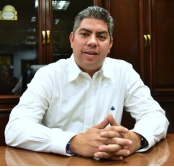
City Mayor: Alfredo Paredes López
Contact number: +52 (866) 649 2800
Govt. Office Address: Zaragoza 332, Zona Centro, CP. 25700, Monclova, Coah.
FB: https://www.facebook.com/alfredoparedesm
Twitter: https://twitter.com/alfredoparedesm
Website: https://www.monclova.gob.mx
